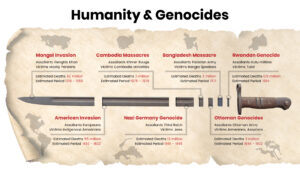Oman’s Minister of Finance Sultan Salim Al Habsi has said total general revenues of the State Budget 2022 are estimated at RO10.58 billion ($27.52 billion), 6 percent higher than revenues expected due to be collected by the end of this year.
Oil and gas returns are set to comprise 68 percent of total revenues, against 32 percent for non-oil and gas revenues, official sources have said.
The revelations came during a press conference organized by the Finance Ministry on Sunday, December 12, apparently to raise the level of transparency and outline the financial, economic, commercial, and investment results, as well as the government’s approaches and general goals for next year.
Following the principle of precaution in financial policy, oil revenues were calculated on the basis of $50 a barrel, said Al Habsi.
He added that the volume of general expenditure estimated for fiscal year 2022 stands at about RO12.1 billion ($31.47 billion), with an expected 2 percent increase in spending during 2022, compared to expected spending as at the end of 2021.
This includes RO1.3 billion ($3.38 billion) as the cost of debt service.
Al Habsi added, “Deficit in 2022, estimated on the basis of $50 a barrel, will stand at RO1.5 billion ($3.9 billion). It stands for 15 percent of total revenues and 5 percent of the Gross Domestic Product. It also falls within estimated deficit of the Medium-Term Fiscal Plan. The cost of repayment of government loans in 2022 is expected to stand at RO2.7 billion ($7.02 billion).”
Over the past few years, Oman’s economy has passed through a succession of financial hurdles: The recession of international oil prices due to the decline of global demand, the rise of general debt to record levels, the pandemic of coronavirus and the hike in cost of borrowing.
All of these are said to have had a collective negative impact on Oman’s creditworthiness.
Preliminary indicators of the budget this year point to the possibility of achieving the lowest deficit since 2014, despite oil-price fluctuation, said Al Habsi.
Budget 2022 was reportedly drafted in conformity with the 10th Five Year Plan and Oman Vision 2040.
It aims to achieve goals like maintaining safe levels of government spending, giving priority to projects of economic and social objectives, and finalizing digital transformation, said Al Habsi.
Maintaining spending on basic services like education, health, and social welfare figure high on the agenda of the budget, the minister said, noting that priority would be given to the use of financial returns to cut down deficit and repay loans in case oil prices rise higher than the endorsed rate.
Minister of Commerce, Industry, and Investment Promotion, Qais Mohammed Al Yousef, said the contribution of service activities to the GDP during the first half of this year stood at 51.7 percent, wholesale and retail 8.9 percent, real-estate activities 8.3 percent, industrial activities 20.4 percent, and converting industries 8.7 percent.
Al Yousef added that a new price guide for government service fees — aimed to facilitate procedures for service beneficiaries — would begin to be implemented with effect from next year, as a first phase, on the Ministry of Commerce, Industry, and Investment Promotion, the Ministry of Heritage and Tourism, and the municipalities sector.
Oman Investment Authority Chairman Abdussalam Mohammed Al Murshidi said more than 110 investment projects are being implemented in 2021 and 2022.
Al Murshidi added that the volume of actual investment spending stood at RO2.6 billion ($6.76 billion) in 2021.
In 2022, the volume of spending is scheduled to stand at RO2.9 billion ($7.54 billion) through the expansion of current projects and the accommodation of new projects.
Al Murshidi said the volume of investment spending in 2022 in the tourism sector was expected to stand at RO193 million ($502 million), RO57 million ($148 million) in the mining sector, RO116 million ($302 million) in the logistics sector, RO156 million ($406 million) in the sectors of communications and information technology, RO99 million ($257 million) in the food sector, RO54 million ($140 million) in the fisheries sector, RO1.41 billion ($3.67 billion) in the energy sector, RO803 million ($2.09 billion) in the general services sector, and RO52 million ($135 million) in sundry sectors.
Economy Minister Said Mohammed Al Saqri said his ministry was working in cooperation with other government departments to provide stimulus initiatives.
“The Economic Stimulus Program is still valid and we are working to upgrade it,” he said.
Ministry of Finance Undersecretary Abdullah Salim Al Harthi said civil ministries’ spending in 2022 was estimated at RO4.3 billion ($11.18 billion).
He added that the 2022 budget, which targets safe and sustainable levels of spending, gives priority to productive sectors.
Al Harthy added that government investment spending during 2022 would reach RO5 billion ($13 billion).
He added that Oman’s credit rating was expected to improve gradually during the next few years upon the implementation of the 10th Five-Year Plan and policies aimed at achieving fiscal sustainability.
Ministry of Economy Undersecretary Nassir Rahsi Al Maawali said average target growth of the national economy from 2021 to 2040 would reach 5 percent.
He affirmed that the national economy will recover at the right pace.
Al Maawali also explained that the rate of expected growth in Oman’s economy for this year, according to the International Monetary Fund, was expected to be 2.5 percent, the second-best rate of growth in the GCC region.








